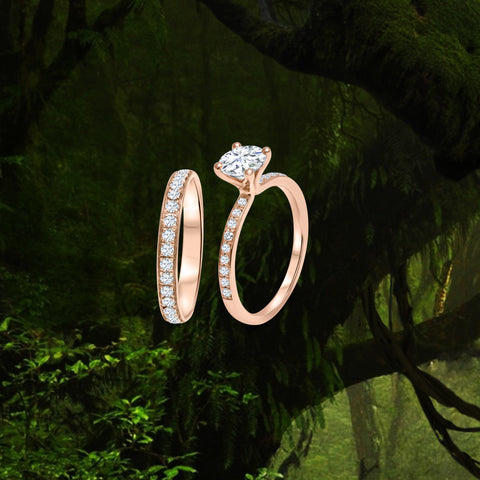Nature's Gold Detectors : How Eucalyptus can change Mineral Exploration
Have you ever heard the phrase "all that glitters is not gold" ? Well, in the fascinating world of eucalyptus trees, it turns out that sometimes, gold can be found where you least expect it - in the water they absorb! At AGUADEORO, we were thrilled to discover this intriguing connection between water and gold, as our brand name translates to "Water of Gold" in Spanish. In this blog post, we'll dive into the captivating science behind how eucalyptus trees are able to extract gold from the ground using water, and how this natural phenomenon is revolutionizing the field of mineral exploration. Get ready to be amazed by nature's own gold detectors!
Biogeochemical Adsorption of Gold :
Eucalyptus trees have a unique ability to absorb gold (Au) from the ground through their roots and transport it to their leaves. This process, known as biogeochemical adsorption, involves the movement of gold particles from mineral deposits in the soil into the living tissues of the tree.
Why Eucalyptus Trees ?
Eucalyptus trees are particularly efficient at translocating gold because they have deep and extensive root systems. These roots can reach far into the ground, enabling the trees to access gold deposits that might be buried beneath thick layers of sediment. This makes eucalyptus trees an attractive option for biogeochemical sampling in areas where traditional mineral exploration methods might be less effective.
The Science Behind It :
Researchers have discovered that eucalyptus trees actively absorb gold particles from the soil and incorporate them into their living tissues. This finding has important implications for the field of mineral exploration, as it provides valuable insights into the behavior of gold in natural samples and the link between biotic and abiotic processes.

How Does This Change Mineral Exploration ?
The discovery of gold in eucalyptus trees has opened up new possibilities for mineral exploration. By analyzing the gold content in tree leaves and other plant tissues, geologists can now identify potential gold deposits without relying solely on traditional, invasive exploration methods. This biogeochemical sampling technique is not only more environmentally friendly, but it also offers a cost-effective alternative to conventional methods.
Future Prospects :
The use of biogeochemical sampling in mineral exploration is still an emerging technique, and more research is needed to fully understand the processes involved and optimize its application. However, the confirmation of gold adsorption in eucalyptus trees has already sparked interest in the scientific community and the mining industry. As our understanding of this phenomenon grows, it has the potential to revolutionize mineral exploration and ensure the continuity of gold supply in a more sustainable way.
Eucalyptus trees are proving to be nature's gold detectors, and their unique ability to adsorb gold is shaping the future of mineral exploration. As we continue to study and understand the intricate relationship between these trees and the gold hidden beneath the Earth's surface, we are unlocking new possibilities for finding precious resources while minimizing the environmental impact of exploration activities.

Source : https://www.nature.com/articles/ncomms3614
